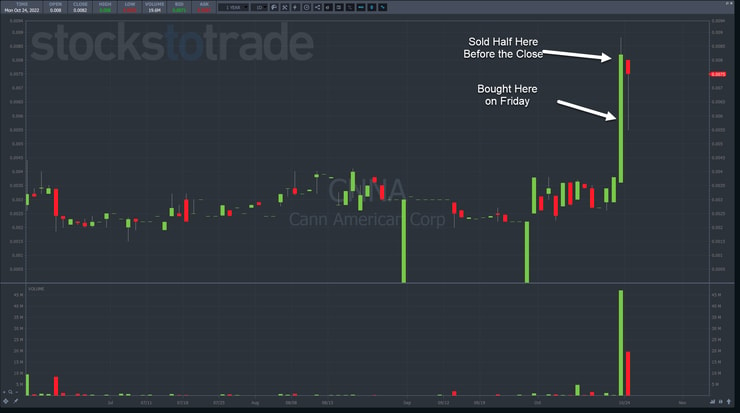Tell me if this sounds familiar…
You’re finally finding your trading groove.
And hitting a handful of winners in a row.
Naturally, you think it’s time to get BIGGER.
So you do…
But you fall instantly out of your comfort zone…
Instead of focusing on the trade…
Your eyes are glued to your PnL…
And instead of reacting as you should…you FREEZE.
Then the losses start piling up fast…and before you know it…all your hard work has gone to waste.
Oversizing on the wrong trades can wipe out days, weeks, months, and in the worst scenarios—years of gains.
It happens to the best traders, and if you’re not focused, it can happen to you.
I’ve helped students for years overcome this problem.
Over 20 students who took my Millionaire Challenge hit that 7-figure milestone.
I hope to double that number in the coming years.
And I want YOU to be one of them.
Most traders never make it to the million-dollar mark, let alone consistently turn a profit.
Across thousands of students, I see one issue time, and again that holds traders back – position sizing.
The good news is that I can help you crush this obstacle and put you on a path to potential profitability with these simple solutions…
Better Than the 5% Rule

A lot of traders live and die by the 5% rule.
They believe you shouldn’t risk more than 5% of your account on any trade.
Some take it to mean you shouldn’t risk losing more than 5% of your account on any trade.
If this or any other percentage works for you, then use it.
For me, I look at each trade as an interview.
Once I’m in, I want the stock to prove that it will make me money. And it’s got to do it quickly.
Otherwise, I cut the trade and move on.
That’s why I tell my students to “cut losses quickly.”
More Breaking News
- Tesla Faces Turbulence: Is It Time to Rethink Investment Strategies?
- Is Applied Digital’s Pivot to AI and Data Centers a Game Changer?
- Cheniere Energy’s Ambitious Expansion: Is It Time to Act?
Now, that’s easy enough to apply when you’re day-trading minutes at a time.
But even swing traders need to apply this as well.
Any position you hold overnight can move against you hard by the market open.
It may not happen often. But all it takes is one to wreck an account.
In my head, I plan out the most likely worst-case scenario for the stock and size my trade accordingly.
For example, Cann American Corp. (OTC: CANN) set up for a nice run into the weekend.
On Friday, I bought 495K shares at $0.0058 just before 3:00 p.m. EST.
Just before the close, I sold 295K shares at $0.0083.
Check out the trade here on Profitly
The reality is that stock could have dropped back to around $0.0030-$0.0035.
It wasn’t likely. But it was possible.
If I kept those 495K shares and that happened, my total loss would have been around $1,139-$1,386.
Sure, it’s possible the stock would go to zero. And I would have accepted that.
However, I sized my position to be comfortable with the worst-case potential losses.
Additionally, I reduced my maximum potential loss by selling 295K shares on Friday for a profit of $737.50.
Penny stocks are my favorite because I don’t need to worry as much about outlier risk, the chance of something catastrophic.
I’m already dealing with extreme movements. So, there isn’t much that can happen that I wouldn’t expect.
The same doesn’t apply to large-cap stocks.
There were a lot of bag holders in Netflix (NASDAQ: NFLX) when it cratered months ago off horrible earnings.
The stock fell so much that it was more than 3x the expected move priced in by the options market.
That’s why it’s important to size your position accordingly, lock in profits, and not be afraid to cut losses quickly.
Trade scared.
At the end of the day, you can’t make money if you can’t stay away from big losses.
–Tim


Leave a reply